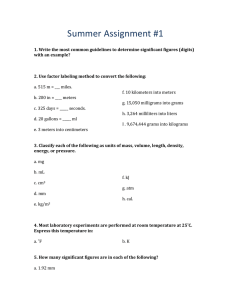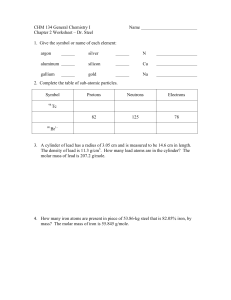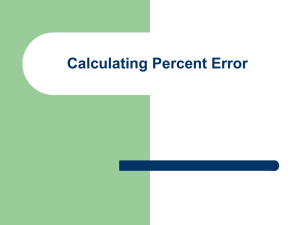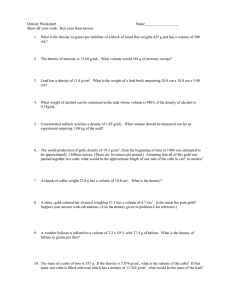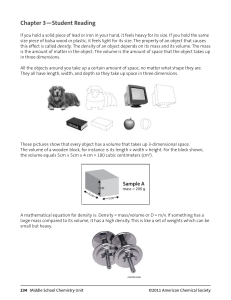Chapter 3, Lesson 1 Activity Sheet Answers
advertisement
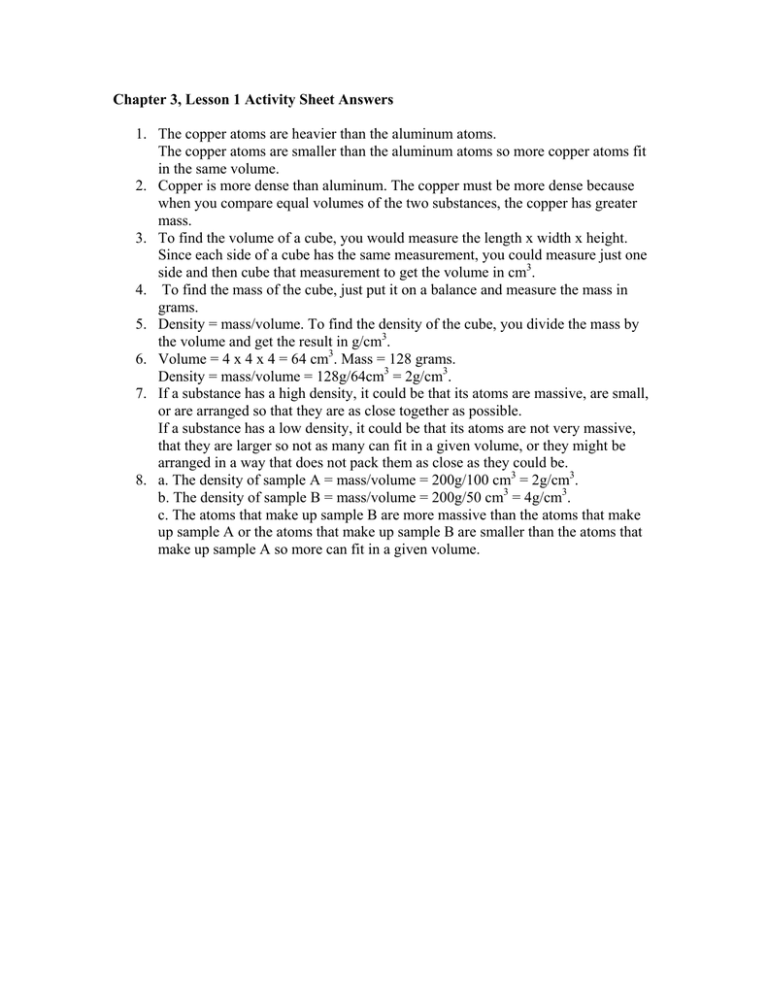
Chapter 3, Lesson 1 Activity Sheet Answers 1. The copper atoms are heavier than the aluminum atoms. The copper atoms are smaller than the aluminum atoms so more copper atoms fit in the same volume. 2. Copper is more dense than aluminum. The copper must be more dense because when you compare equal volumes of the two substances, the copper has greater mass. 3. To find the volume of a cube, you would measure the length x width x height. Since each side of a cube has the same measurement, you could measure just one side and then cube that measurement to get the volume in cm3. 4. To find the mass of the cube, just put it on a balance and measure the mass in grams. 5. Density = mass/volume. To find the density of the cube, you divide the mass by the volume and get the result in g/cm3. 6. Volume = 4 x 4 x 4 = 64 cm3. Mass = 128 grams. Density = mass/volume = 128g/64cm3 = 2g/cm3. 7. If a substance has a high density, it could be that its atoms are massive, are small, or are arranged so that they are as close together as possible. If a substance has a low density, it could be that its atoms are not very massive, that they are larger so not as many can fit in a given volume, or they might be arranged in a way that does not pack them as close as they could be. 8. a. The density of sample A = mass/volume = 200g/100 cm3 = 2g/cm3. b. The density of sample B = mass/volume = 200g/50 cm3 = 4g/cm3. c. The atoms that make up sample B are more massive than the atoms that make up sample A or the atoms that make up sample B are smaller than the atoms that make up sample A so more can fit in a given volume.
